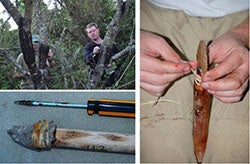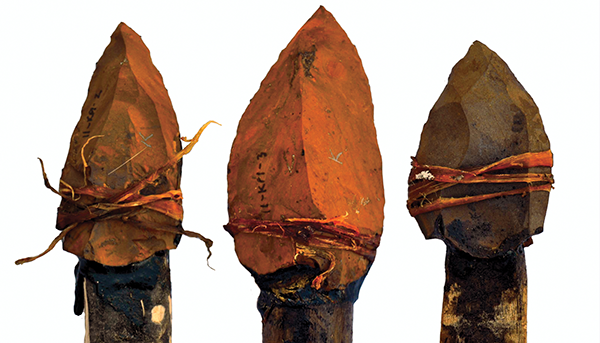
Sword in the stone
When baking a cake, how can you make sure you end up with a dessert instead of a disaster? Well, it takes the right ingredients put together at the right time and baked at the right temperature. Tools are much the same way. Stone is collected, knapped, and shaped to be attached onto a handle, spear, or arrow.
The wood, bone, or ivory haft has to be collected and carved into the right shape and size using existing tools. Sticky tree sap, or resin, is collected from plants and acts like a glue for holding the tool together. Animal tendons and ligaments can be dried and separated into long threads. These threads, or sinew, can then be used to attach the stone onto a handle.
Some anthropologists think that making these multipart tools requires a new type of intelligence. If that is true, then the age of hafted tools can provide hints as to human abilities for language, planning, and consciousness.
Be Part of
Ask An Anthropologist
By volunteering, or simply sending us feedback on the site. Scientists, teachers, writers, illustrators, and translators are all important to the program. If you are interested in helping with the website we have a volunteers page to get the process started.


